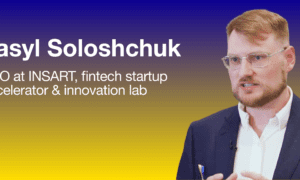Vanadium pentoxide (V₂O₅), commonly abbreviated as v2o5, is a bright yellow to red crystalline solid widely recognized for its critical role in industrial processes. As the most stable and commercially significant compound of vanadium, V2O5 is central to several high-value applications, ranging from metallurgy to energy storage. This article delves into the properties, uses, and market dynamics surrounding vanadium pentoxide, a material poised to shape the future of clean technologies and advanced materials.
Understanding Vanadium Pentoxide (V2O5)
Vanadium pentoxide is an inorganic compound composed of two vanadium atoms and five oxygen atoms. Its chemical formula is V2O5, and it typically appears as a red or orange-yellow crystalline powder. V2O5 has a high melting point of about 690°C (1,274°F) and is moderately soluble in water and acids, especially under elevated temperatures.
One of the defining characteristics of V2O5 is its oxidation state. Vanadium in V2O5 is in the +5 oxidation state, which gives it strong oxidizing properties. This makes the compound highly effective in catalysis and other redox reactions.
Key Physical and Chemical Properties
- Molecular Weight: 181.88 g/mol
- Density: 3.36 g/cm³
- Melting Point: 690°C
- Solubility: Slightly soluble in water, soluble in acids
- Color: Yellow-orange to red powder
- Crystal Structure: Orthorhombic
These properties are critical to the compound’s wide applicability. For instance, its stability under high temperatures and reactive potential make it ideal for catalytic processes.
Primary Applications of V2O5
1. Catalysts in Industrial Chemistry
The most significant use of V2O5 is as a catalyst in the production of sulfuric acid through the Contact Process. In this role, V2O5 facilitates the oxidation of sulfur dioxide (SO₂) to sulfur trioxide (SO₃), a critical step in sulfuric acid synthesis.
Additionally, it acts as a catalyst in the production of maleic anhydride from hydrocarbons and in various organic syntheses, particularly oxidative dehydrogenation reactions.
2. Metallurgy and Alloy Production
Vanadium pentoxide plays a vital role in steel and ferroalloy manufacturing. When added to steel, vanadium improves strength, wear resistance, and toughness. V2O5 is used to produce ferrovanadium, an alloy that helps refine grain structure and enhances performance in high-stress applications like aerospace and automotive components.
3. Energy Storage and Batteries
One of the most promising uses of V2O5 is in vanadium redox flow batteries (VRFBs). These batteries use different vanadium oxidation states in liquid electrolytes to store energy efficiently and safely, making them ideal for grid-scale renewable energy storage. V2O5 serves as the precursor for vanadium electrolytes in this technology.
4. Pigments and Glass Coatings
Vanadium pentoxide is used in ceramics, pigments, and specialty glasses. It imparts a yellow-orange hue in ceramic glazes and also acts as a UV-absorbing agent in glass coatings, enhancing durability and thermal performance.
5. Environmental Catalysts
V2O5 is used in Selective Catalytic Reduction (SCR) systems to reduce nitrogen oxides (NOx) in vehicle exhaust and industrial emissions. Its role in SCR technology makes it essential for meeting environmental regulations and reducing air pollution.
Market Trends and Global Demand
The global vanadium pentoxide market has experienced substantial growth in recent years, fueled by increased demand for high-strength steels, renewable energy storage, and pollution control technologies.
1. Growth in Energy Storage
The push for clean energy and the need for grid-scale battery storage have significantly raised the profile of vanadium pentoxide. V2O5 is at the heart of the expanding VRFB sector, which is gaining traction as a safer and more durable alternative to lithium-ion batteries for large-scale energy storage.
2. Demand from Construction and Automotive Sectors
As infrastructure and automotive industries demand lighter and stronger materials, the use of vanadium-enhanced steel is growing. This is particularly evident in regions like China and India, where urbanization and industrialization continue to accelerate.
3. Supply Chain and Geopolitical Factors
Vanadium supply is often tied to the extraction of vanadium-bearing ores or as a byproduct of uranium and steel production. China, Russia, and South Africa dominate global production. Market fluctuations can occur due to export restrictions, environmental regulations, and production bottlenecks in these countries.
4. Price Volatility
The price of vanadium pentoxide can be volatile, reflecting shifts in global demand, mining output, and trade policies. In periods of high steel demand or battery expansion, V2O5 prices can surge rapidly, affecting downstream industries.
Sustainability and Recycling
Sustainability is becoming a key factor in the V2O5 value chain. Recycling vanadium from used catalysts, batteries, and industrial waste is gaining attention as a means to secure supply and reduce environmental impact. Technologies to extract vanadium from spent materials are advancing, aligning with the circular economy principles.
Future Outlook
The future of vanadium pentoxide (V2O5) looks promising. With rising investments in green energy infrastructure, demand for robust battery technologies, and the ongoing need for high-performance alloys, V2O5 is poised to play an increasingly pivotal role in the global materials economy.
Researchers are also exploring nano-structured V2O5 for use in next-generation lithium batteries, supercapacitors, and even in electrochromic devices (smart windows). As these technologies mature, V2O5 could become even more embedded in daily life and industrial applications.
Conclusion
Vanadium pentoxide (V2O5) is far more than a chemical compound; it is a strategic material integral to diverse sectors including energy, environment, and advanced manufacturing. Its versatile properties, strong catalytic potential, and emerging role in battery technology make it a compound of high commercial and scientific interest. As the world continues its transition toward a sustainable future, the demand for V2O5 is set to climb, making it a critical player in tomorrow’s technology landscape.





























